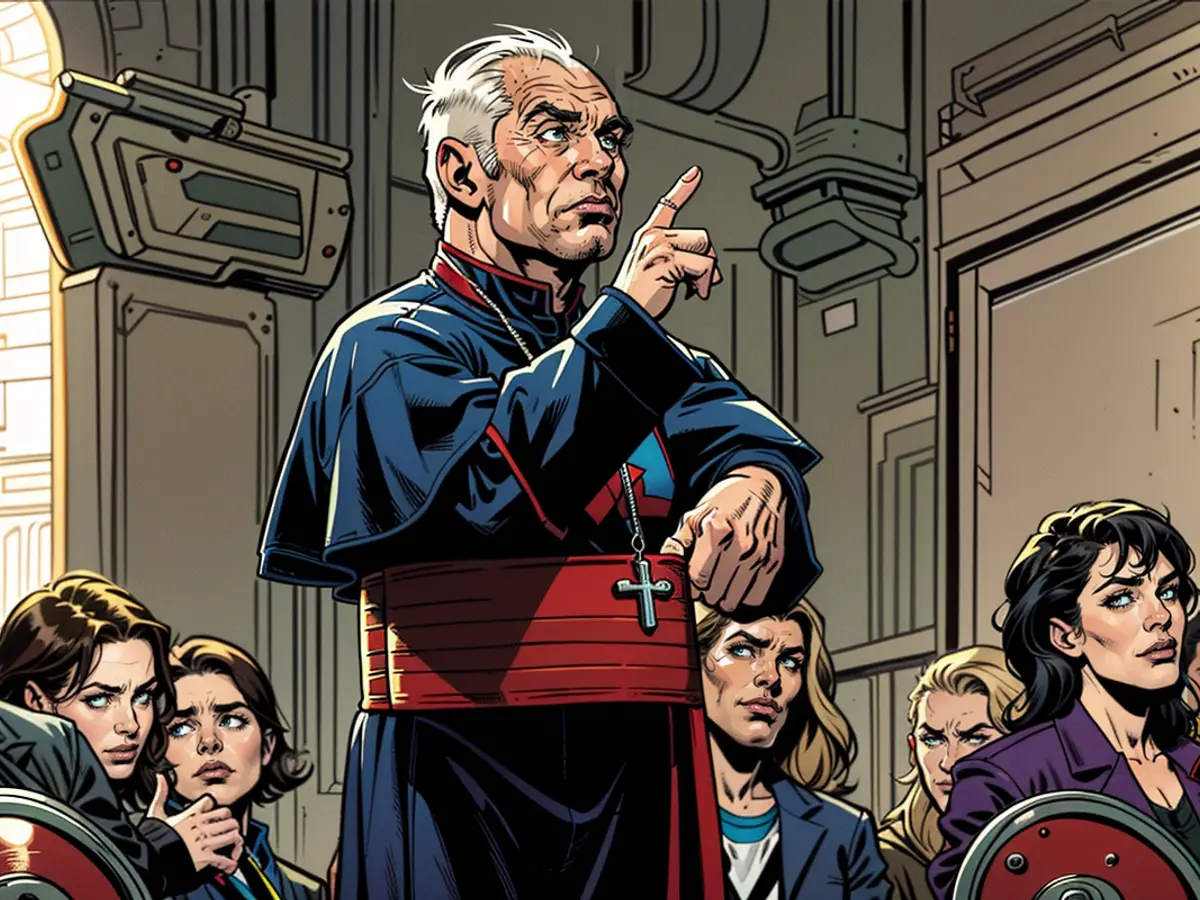Pope’s chief of staff gives evidence in landmark London property trial
Archbishop Edgar Peña Parra, who holds the role of “sostituto” (“substitute”), the equivalent of a papal chief of staff, took the witness stand in a dispute over the Holy See’s disastrous investment in a London property, the center of the Vatican’s “trial of the century”.
The archbishop’s appearance in court is rare given the Vatican and its senior officials have largely avoided legal actions in foreign courts – often concerning sexual abuse cases – under the protection of sovereign immunity. But the London legal action is believed to be the first time the Vatican has stood trial in a foreign jurisdiction, while Archbishop Peña Parra is one of the highest-ranking Vatican officials to give evidence in such a case.
The 64-year-old Venezuelan archbishop wore a black clerical suit during his evidence and began by swearing an oath on “almighty God” that he would tell the truth. Although he was occasionally assisted by an interpreter, he answered questions in English.
Over more than a day and a half of cross-examination, the archbishop insisted several times that he is a “priest, and not a specialist in banking” as he explained that the Vatican had been the victim of extortion in the property deal.
The case against the Holy See has been bought by Raffaele Mincione, an Italian-British financier who was among those convicted by a Vatican court last December of embezzlement and self-laundering for his part in the London property deal. Mincione has denied all the charges against him and is appealing his convictions.
That trial marked the first time a cardinal was convicted and sentenced by a Vatican court for financial crimes and is considered an important moment in Pope Francis’ long battle to clean up the Vatican’s finances.
But Mincione is now seeking a ruling in the London courts that he acted in “good faith” throughout his dealings with the Vatican, which concerned investments in a vast property in southwest London’s Chelsea neighborhood, originally built as a car showroom for the Harrods department store. The Holy See says it spent around $400 million on the deal over several years but ended up with losses of $150 million after eventually selling the asset.
In 2014, the Vatican invested $200 million for a 45% stake in the Chelsea property through a fund run by Mincione, whose companies had purchased the building for around $165 million (£129.5 million) at the end of 2012.
Although there was a plan to turn the property into apartments, the Vatican says the property’s value was inflated by Mincione and that it was losing money on its investment. Archbishop Peña Parra, who was not in post at the time of the original investment, sought to exit the deal by buying the building outright and, in the process, the Holy See paid £40 million to Mincione. The Vatican says this was a “fraudulent overpayment.”
Helping to broker the exit deal in 2018 from Mincione’s fund was another financier, Gianluigi Torzi, who was also convicted at the Vatican trial last December. He was found to have structured a deal which left him in control of the building and the Vatican purchasing an “empty box”.
Torzi was then accused of extorting around $16 million from the Vatican as Peña Parra and his office sought to finally gain control of the Chelsea building. The property was eventually sold by the Holy See in 2022 for around $229 million.
Under cross-examination the archbishop was questioned repeatedly about the Torzi payments and was accused by Mincione’s barrister of dishonesty because the payments to Torzi involved a false invoice.
The archbishop admitted to sending a false invoice but said Torzi had “trapped” the Vatican and would “lie and lie.” Peña Parra told the judge repeatedly that he had been trying to extricate the Holy See from a bad deal and gain control of the building.
The archbishop, who became the Vatican number three in October 2018, said he only became aware of Torzi’s schemes later and that some of his staff were “superficial and naïve.” He insisted that now “I would give Torzi nothing, and I would put him in jail several times.”
Mincione’s lawyers have accused the Vatican of an “incoherent and confused allegation of conspiracy” against their client, while the Holy See insist that Mincione did not act in good faith. Mincione was also cross examined during the trial, with lawyers accusing him of producing “grossly misleading” figures about the Chelsea property’s value.
The heart of the dispute concerns the value of the Chelsea property. The Vatican’s legal team said the stated value of £275 million ($350 million) for the London property in 2018 was a “fraudulent representation” of its market worth, while Mincione’s lawyers denied this, saying it was an “audited valuation.” In his witness statement, Peña Parra said he was told of “concerns” that the value of the building was less than the Vatican had “originally thought.”
The trial is expected to conclude later this month with a judgment likely to be released later in the year. The archbishop is due to conclude giving evidence on Monday.
The London property dispute, labeled as the Vatican's "trial of the century," involves significant investments in Europe, specifically in a vast property in Chelsea, London. Archbishop Penna Parra mentioned that the Vatican had losses of $150 million after investing around $400 million in Europe.







